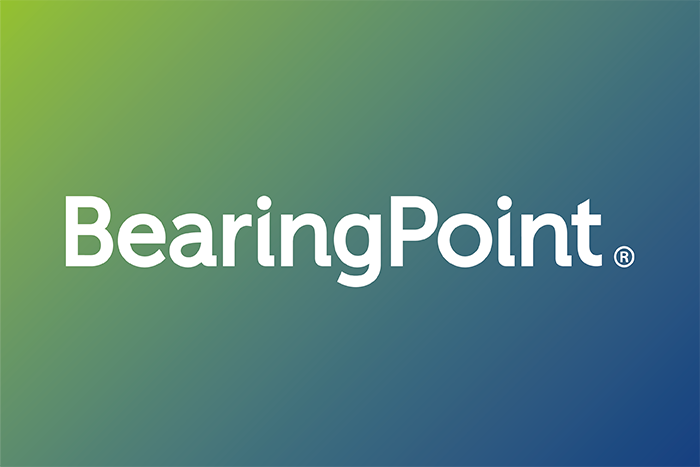Written by Molly DeFilippo, Business Analyst at BearingPoint
When the COVID-19 pandemic hit in March of 2020, the surge in demand for personal protective equipment (PPE) all around the globe skyrocketed. As cases began to rise and panic set in, the demand for PPE put substantial constraints on the global supply chain. With so much uncertainty and lack of transparency panic buying, hoarding, and product misuse became the apparent, therefore causing a massive disruption to the global supply chain.
Context
Key PPE items include, surgical masks, gowns, goggles, gloves, sanitizers, all of which are critical for healthcare workers and were and still are in short supply. With the surge in demand came a rise in prices. In 2018 the global market size for PPE was estimated to be $12.6 billion, in 2020 it was valued at $77.36 billion, which is nearly five times what it was in 2018 (Grand View Research). Because of the strain the pandemic put on the PPE supply chain, the U.S. became heavily dependent on overseas production, especially The People’s Republic of China (PRC). “In particular, the PRC emerges as the world’s largest exporter in commodity groups that include masks, gowns, protective suits, and goggles” (ADB). While the PRC was the major exporter throughout the pandemic, disruptions to their supply chain affected networks throughout. The PRC issued trade restrictions, export bans, and factory shutdowns which negatively impacted the global supply and trade networks.
Bottlenecks
COVID-19 created many challenges and disruptions within supply chains globally, including slowing the flow of raw materials into goods which resulted in congesting the overall manufacturing lifecycle. Inefficiencies brought about by bottlenecks created delays in the PPE production time and higher production costs overall. Major sources of bottlenecks are the lack of raw materials, transportation constraints, and export bans.
There has been a significant strain on the materials to produce surgical masks, because of an exponential surge in demand. For example, there has been a shortage in nonwoven polypropylene which is a key component in creation of an N95 mask. In addition to raw material shortages, there have been limitations on the ability to transport PPE. A limited workforce and lack of freight availability, mainly due to quarantine protocols has contributed to numerous backlogs in production. Manufacturers have experienced significant delays at ports and rail yards, sometimes having to wait one to two months to several weeks to have a container unloaded for all types of products. With so many limitations in place, countries have mandated export bans on critical materials and products to mitigate shortages. As of March 2020, export bans were in place in 22 economies (ADB). Export bans may seem like a viable solution, but in reality, they further contribute to shortage problems, especially for import reliant countries.
Small Business Response
With so many disruptions to the PPE supply chain, U.S. manufacturers began to launch PPE production lines. Small businesses with excess capacity were able to help respond to the demand by reinventing their business models. Headquartered in Cleveland, OH, CleanLife LED, originally a LED light manufacturer, initiated a new business model to help distribute PPE nationwide. Speaking to the founder and CEO of CleanLife, Justin Miller provided me some insights from his perspective on how the pandemic has affected the company’s supply chain.
CleanLife has taken on the challenge of sourcing PPE from a manufacturer in Taiwan while also creating new products of their own to help the country fight COVID-19. To their benefit, distributing PPE has expanded their customer base and given them a new stream of revenue which helped them get through the downturn in business during the pandemic. They have also utilized their knowledge of UVC light technology to create a line of products that disinfects surfaces large and small. “From a product that sanitizes an entire 30’ x 30’ room, to an accessory that plugs into your phone that will sanitize a smaller area like an elevator button or door handle, we feel the future of UVC light as a sanitizing tool will be a growth segment for the company” (Miller). While the pandemic has brought on a lot of opportunities that has allowed CleanLife to grow, it has also brought upon many challenges. One obstacle, like the rest of the world has been the matter of supply and demand. “As the country has gotten a better understanding of the virus, there is now an excess of inventory that has led to wholesaling of those items except the need for N95 masks has surged. We thought we might be done ordering masks for a while, but the Delta variant has changed that dramatically” (Miller). CleanLife primarily works with a manufacturer in Taiwan who has kept up with the demand but experienced challenges of receiving and shipping products in a cost-effective manner.
While the pandemic has brought on a significant number of challenges for companies across the world to overcome, many like CleanLife have been able to take advantage of this difficult time and make a difference through innovation and flexibility. The past year and a half have brought to light many inefficiencies in the global supply chain, which many are more aware of today. While changes are being made, there is still a lot more to.




Share:
CLEANLIFE® celebrates 10 years of Finding a Better Way™
CLEANLIFE® Named Weatherhead 100 Award Winner